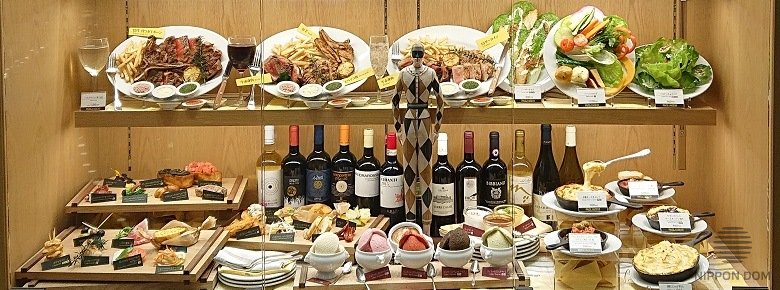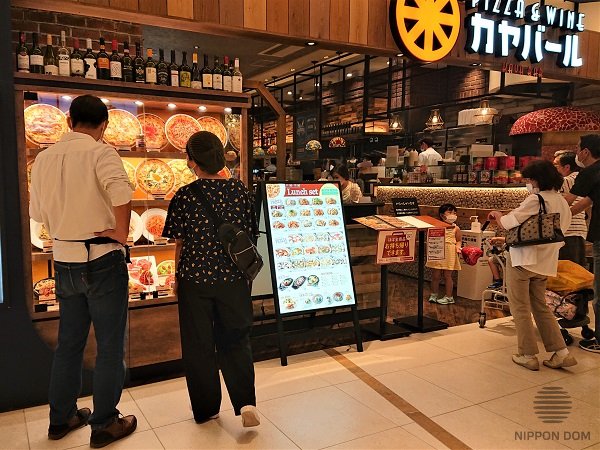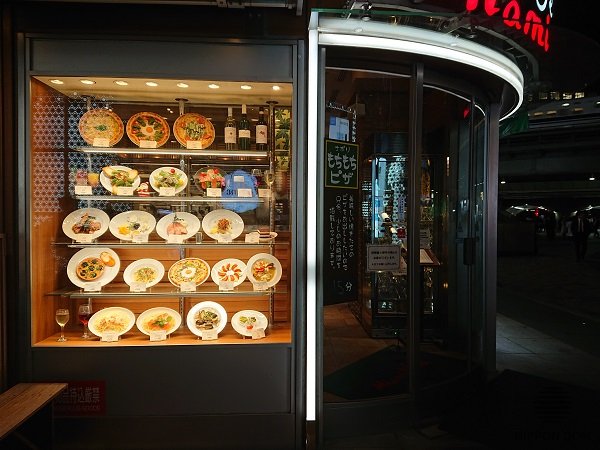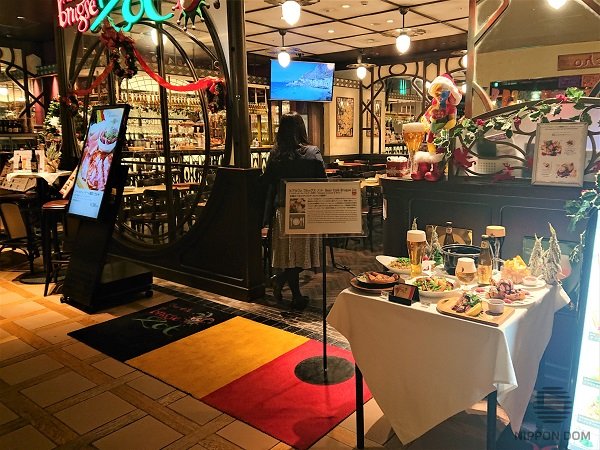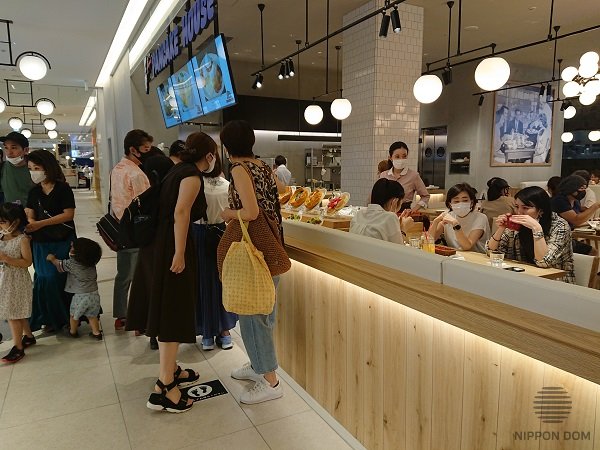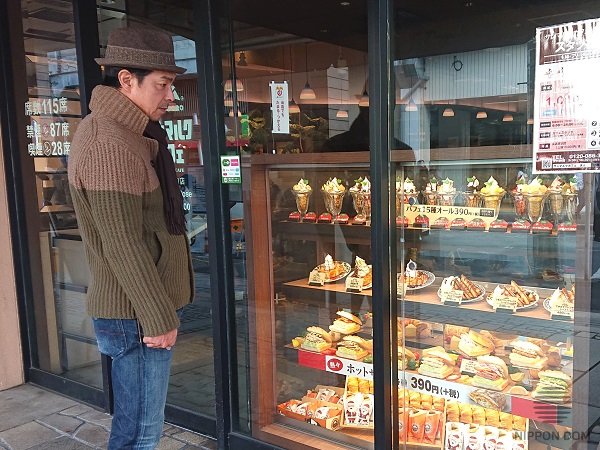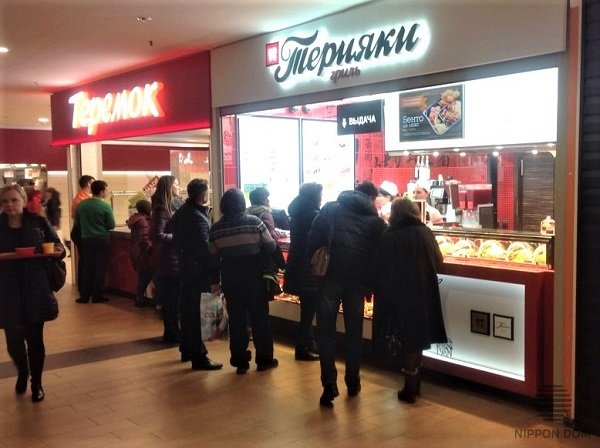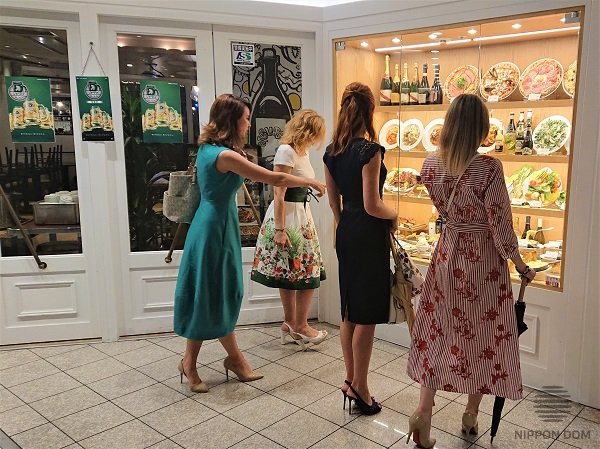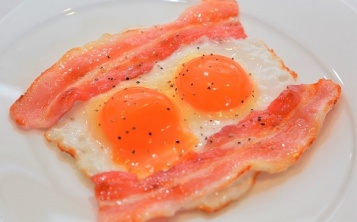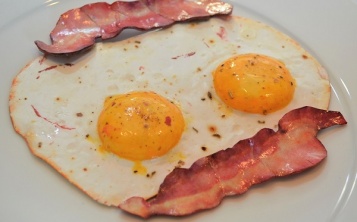How to Turn a Restaurant Storefront into a Sales Tool: Ideas, Examples, and Calculations
How to Promote a Restaurant Without Overspending: A Proven Japanese Strategy
How can you effectively market your restaurant and attract more guests? Which advertising methods truly work, and which ones simply drain your budget? Is it possible to generate a steady stream of customers without constant financial investments?
These are the questions that thousands of restaurant owners ask. And it’s no surprise—every restaurant owner wants their venue to be filled with guests. However, there’s a major challenge in achieving this goal.
Traditional Restaurant Marketing: Why It Doesn’t Always Work
Many restaurant owners turn to marketing agencies hoping to increase their customer flow. In response, they are often offered conventional promotional strategies such as:
- Targeted and paid online advertising
- Social media marketing campaigns
- Listings on food delivery aggregators
- Large-scale promotional events
- Developing a mobile app or online booking system
These methods are often presented as long-term investments in “brand awareness” and “reputation.” However, they require continuous funding and do not always yield guaranteed results.
Additionally, these strategies can cost thousands, if not tens of thousands of dollars each month. Their effectiveness depends on ad quality, market competition, and various other factors beyond the restaurant owner’s control.
A Smarter Alternative: The Japanese Local Marketing Strategy
In this article, we will introduce a powerful yet cost-effective Japanese method for attracting restaurant guests. You will discover how to build a steady flow of customers using an efficient local marketing strategy that has proven successful in highly competitive environments.
Why Japan? What Do Japanese Restaurants Have to Do With This?
You might be wondering: Why are we focusing on the Japanese restaurant marketing model?
The answer is simple: Japan has one of the most competitive restaurant industries in the world.
On a tiny landmass, which is many times smaller than the United States, Japan is home to nearly 130 million people—almost 40% of the U.S. population. Yet, the country operates hundreds of thousands of restaurants, creating an insanely competitive market.
Take Tokyo as an example:
- With a population of over 14 million, the city has more than 80,000 restaurants and cafes.
- In comparison, New York City, with a similar population, has around 27,000 restaurants—three times fewer than Tokyo.
- Opening a restaurant and attracting customers in Tokyo is far more challenging than in almost any other major city.
In short: if marketing a restaurant in New York is a difficult task, in Japan, it’s a three-to-five-star challenge. This is precisely why Japanese marketing techniques can be adapted to boost restaurant success in any competitive environment worldwide.
Every person, passing by your restaurant is a potential visitor, or may even become a regular customer, with luck.
Why Japanese Restaurants Avoid Online Advertising
Unlike many Western countries, Japanese restaurant owners rarely invest in online ads. The reason? It’s expensive and often ineffective. Instead, they focus on converting foot traffic directly into customers.
This approach makes perfect sense. Why spend money on digital ads when potential customers walk past your restaurant every day? If someone takes the same route to work or school daily, they are far more likely to visit a restaurant that visually appeals to them.
From a marketing perspective, Japanese restaurant owners have shifted their focus from “attracting online customers” to “maximizing foot traffic conversion through the restaurant’s storefront”. This method has several key advantages:
- One-time investment – improving a restaurant’s storefront is a single upfront cost that keeps generating customers without ongoing expenses.
- Consistent results – a well-designed storefront interacts with passersby every single day.
- Aesthetic appeal – an inviting exterior not only brings in customers but also enhances the brand image.
How This Strategy Increases Restaurant Revenue
By adopting this strategy, many restaurants have seen up to a 300% increase in revenue. This is due to its impact on key metrics:
- Higher foot traffic conversion – more people step inside the restaurant.
- Increased average check size – a well-presented atmosphere encourages larger orders.
- More repeat customers – familiar, visually appealing restaurants become part of people’s daily routines.
Next, let’s dive into how this technique works and how it can be applied to boost any restaurant’s success.
How a Restaurant Storefront Can Attract More Customers
In Japan, restaurants use realistic food replicas to capture the attention of passersby. These lifelike silicone models accurately represent the dishes and drinks served inside, creating a powerful visual impact that immediately triggers appetite.
Most commonly, food replicas are displayed behind glass—in a window showcase or a dedicated display box. However, depending on the restaurant’s location, the approach may vary. For venues with limited space or no storefront windows, some restaurants create a replica display table near the entrance, featuring their most popular menu items. This setup maximizes exposure and draws in foot traffic.
Due to their cost-effectiveness and efficiency, display windows with food models became the most popular type of advertising catering for facilities in Japan.
Why Food Replicas Boost Restaurant Sales
This unique marketing strategy serves multiple purposes:
1. Grabbing Attention & Generating Free Social Media Buzz
People love taking photos of realistic food replicas, often sharing them on social media. This provides restaurants with organic, free advertising that spreads virally.
2. Creating an Instant Appetite Trigger
These food models are crafted with remarkable detail—from glossy sauces and gas bubbles in drinks to the foamy texture of beer. The lifelike appearance instantly makes passersby hungry and encourages them to step inside.
In one Tokyo restaurant, after placing a replica display table, customer foot traffic increased by 60-70% on weekdays.
3. Showcasing the Menu in a Simple & Engaging Way
A well-presented storefront lets customers see exactly what’s on the menu and how much it costs, making it easier to decide. Additionally, seeing delicious-looking meals in person often leads to larger orders, increasing the restaurant’s average check.
4. Standing Out from Competitors
A food replica display is not just a marketing tool—it becomes a unique selling point. Especially in areas with multiple dining options, having an eye-catching storefront can give a restaurant a distinct competitive advantage.
In conditions of limited space, some restaurants replace display window with a table and decorate it with the most popular menu items.
The Impact of Food Replica Displays on Revenue
The biggest benefit of this approach is that it requires only a one-time investment but delivers continuous results. Unlike digital advertising, which demands ongoing spending, a well-designed storefront display attracts customers every day without additional costs.
On average, restaurants that implement this strategy see a 250-300% increase in revenue, depending on the location and day of the week.
Expenses for a display window is a single action, cost recovery – several weeks, whereas effect from bringing new customers to your restaurant is constant.
More Examples of Restaurant Storefront Displays
A 250-300% increase in revenue from food replica displays is an average benchmark. In high-foot-traffic locations, sales growth can be even more substantial.
This marketing strategy is particularly effective for mid-range dining establishments, including:
- Family-style and chain restaurants,
- Ethnic cuisine restaurants (Japanese, Italian, Chinese, etc.),
- Cafés and bistros,
- Fast food outlets.
Due to their cost-effectiveness and proven success, food replica displays have become one of the most widely used promotional tools for restaurants, cafés, and other food service businesses.
Many outlets have increased their income within 200-300%. In places with significant turnaround, the income increase may be ever greater.
Expansion of This Marketing Method in Other Countries
This restaurant marketing strategy is still emerging in many countries, but its impact is already noticeable. Restaurants that have incorporated food replicas into their storefront displays and made them highly visible to passersby are attracting substantially more customers.
MORE INFORMATION ABOUT FOOD MODELS
How Much Does a Restaurant Storefront Cost? Is It Worth It?
Having full tables and increasing profits is great, but the main question remains: how much does this type of advertising cost? How long does it take for a storefront investment to pay off, and is it more cost-effective than online marketing? Let’s analyze this using New York City as an example.
Cost of Online Advertising for Restaurants
The cost of online promotion varies depending on the agency, the expertise of specialists, and the selected marketing tools. More budget-friendly options include hiring freelancers.
However, on average, a comprehensive online marketing campaign for a restaurant with around 50 daily visitors costs $2,266–$3,399 per month.
According to industry reports, this typically increases customer traffic by 10-20%, meaning a maximum of 250 additional visitors per month.
A yearly online marketing budget would total $27,192–$40,788, attracting only 3,000 extra customers over 12 months.
According to Japanese marketing specialists’ statistics, models of food and drinks in a display window increase number of restaurant visitors to 40-60% from the day one.
Cost of a Restaurant Storefront with Food Replicas
Now, let’s compare this to attracting customers using a food replica storefront.
1. Cost of one food replica — $170
2. Minimum number of replicas for an effective storefront — 20 pieces (fewer can work with smart placement)
3. Total cost for food replicas — $3,400 (one-time payment)
4. Storefront design and setup (shelves, décor, additional elements) — $2,266–$3,399
Total investment: $5,666–$6,799, which is equivalent to just two months of online advertising costs.
Comparing Effectiveness: Online Ads vs. Storefront Display
Japanese marketing research indicates that a food replica storefront increases foot traffic by 40-60% immediately.
If we take the minimum increase of 40%, that means an additional 500 customers per month. This is twice as many as a well-executed online campaign.
Additionally, over a year, the storefront costs six times less than online advertising, and its effect remains constant over time. Over two or five years, the cost savings become even more significant.
Why This Works in New York City
Let’s compare this with the highly competitive restaurant industry in New York City. According to reports, the city has around 27,000 restaurants, competing for attention among millions of residents and tourists.
- A restaurant located in Times Square or Midtown Manhattan pays a premium for digital ads but still struggles to stand out.
- Online ads require constant spending, and once they stop, customer flow drops significantly.
- A food replica storefront works 24/7, attracting both locals and tourists walking by.
In a high-foot-traffic area like Fifth Avenue, Broadway, or Chinatown, a well-designed food display instantly grabs attention, making it far more effective than online ads that users can simply scroll past.
The Big Takeaway
A major difference is that once online ads stop, customer flow drops immediately. A storefront display, however, keeps working indefinitely without extra costs.
For a restaurant in New York, where foot traffic is key, investing in a visually appealing storefront with food replicas is a long-term strategy that delivers consistent results without ongoing expenses.
Materials for food models for a display window
Materials for Restaurant Display Food Replicas
There are three main materials used to create restaurant food replicas: silicone, plastic, and plaster. They differ in cost, appearance, and durability.
In Japan, restaurants exclusively use silicone replicas because:
1. They look incredibly realistic, capturing attention, stimulating appetite, and increasing sales.
2. They are highly durable – a silicone replica lasts over 15 years, while plastic or plaster alternatives need replacement every 2-3 years.
Comparison:
- Plastic and plaster replicas fade, lose their texture, and require frequent replacement.
- Silicone replicas maintain their vibrant colors, fine details, and lifelike appearance for decades.
Take a look at this example: on the left – a silicone egg replica, on the right – a plaster version. Notice:
- The rich colors
- The precision in details
- The true-to-life resemblance
Which of these replicas makes you want to order bacon and eggs right now?
Comparison of Food Replica Materials
At first glance, choosing cheaper materials for food replicas might seem like a cost-saving measure. However, in the long run, it leads to lost revenue.
Why?
- Lower realism reduces their ability to attract customers.
- Short lifespan (1-3 years) requires frequent replacements.
- They don’t trigger appetite, meaning fewer impulse purchases.
- They quickly lose shape and color, negatively affecting food presentation.
As a result, cheap replicas do not pay off. The loss of potential revenue far exceeds any initial savings, making low-cost replicas an inefficient investment.
Conclusion
We’ve explored an innovative and highly effective way to promote restaurants using food replicas. While this method is still gaining popularity outside Japan, it is already proving to be highly successful, delivering results comparable to Japanese restaurants, where this strategy has been perfected over decades.
This approach helps restaurants increase foot traffic, boost average check size, and create a unique competitive advantage—all without requiring ongoing ad spend.
Since it’s impossible to cover every aspect of food replica production and storefront design in just one article, I’ll be publishing a series of articles dedicated to this topic.
If you have any questions or need expert advice on setting up a food display for your restaurant, feel free to leave a comment or contact me directly. I’ll be happy to provide insights and showcase examples that can help increase your restaurant’s visibility and revenue.

